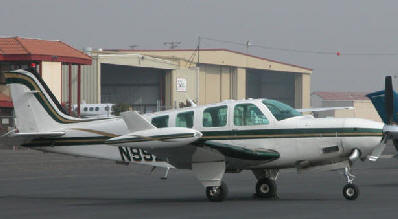
NEWSROOM
 |
NEWSROOM |
|
|
|
|
|||
|
FAA Proposes
$4 Million Penalty On Spitfire Aviation Services |
||||
|
By Mike Mitchell |
||||
 |
December 5, 2009 - The Federal Aviation Administration has proposed a $4
million civil penalty for Spitfire Aviation Services, LLC, of
The alleged violations include conducting at least 798
passenger-carrying revenue flights between November 2005 and October
2007, even though Spitfire held no air carrier certificate or the
appropriate operations specifications required under federal regulations
for charter operators. Inspectors also found that 262 of those flights
were conducted by a pilot who did not hold an Air Transport Pilot
Certificate with the appropriate type rating for the aircraft being
flown. |
|||
|
Spitfire had no FAA-approved pilot training and testing program in
place, nor the approved maintenance program or drug testing and alcohol
misuse prevention programs required by the government.
During the time it was operating in violation of regulations, Spitfire
experienced a crash that destroyed the BE-36 and resulted in the death
of the pilot. The three passengers on that flight survived the accident.
The accident occurred during the return leg of a round-trip that
departed from the |
||||
|
The pilot held a commercial pilot certificate for airplane
single-engine, multi-engine land, and instrument airplane. He also held
a flight instructor certificate for airplane single-engine land. In
addition, he held an airframe and powerplant mechanic's certificate. His
last second-class Federal Aviation Administration (FAA) medical was
issued on December 29, 2005. At the time of his last medical examination
the pilot reported having accumulated 5,000 flight hours. The pilot's
logbooks were not located during the course of the accident
investigation. The airplane was reportedly based (hangared) at FYV. The
pilot was reported to regularly fly form the airport and was well
familiar with the approach being flown.
The airplane was a 1996 model Beech A36, which is a single-engine,
low-wing airplane, with retractable tricycle landing gear, and was
configured with a total of 6 seats. The airplane was powered by a
300-horsepower Continental IO-550-B reciprocating engine. The engine was
driving a McCauley 3-blade constant speed propeller. The airplane's
maintenance records were not located during the course of the NTSB
investigation. The automated weather station at FYV reported at 2153, winds from 040 degrees at 4 knots, temperature 45 degrees Fahrenheit, dew point 44 degrees Fahrenheit, with an altimeter pressure setting of 30.38 inches of Mercury, visibility 10 miles and the ceiling at 400-feet overcast. The automated weather station at the Northwest Arkansas Regional Airport, which is 18 miles north, at 2155 reported winds from 040 degrees at 6 knots, temperature 46 degrees Fahrenheit, dew point 12 degrees Fahrenheit, with an altimeter pressure setting of 30.31 inches of Mercury, visibility 7 miles and the ceiling at 700-feet broken. |
| ?AvStop Online Magazine Contact Us Return To News |
|